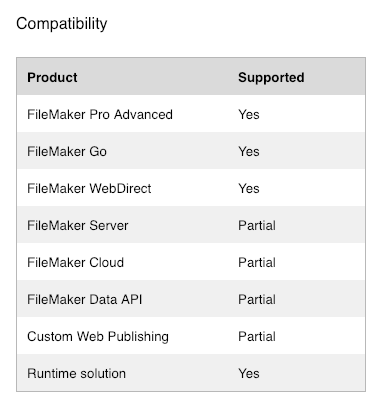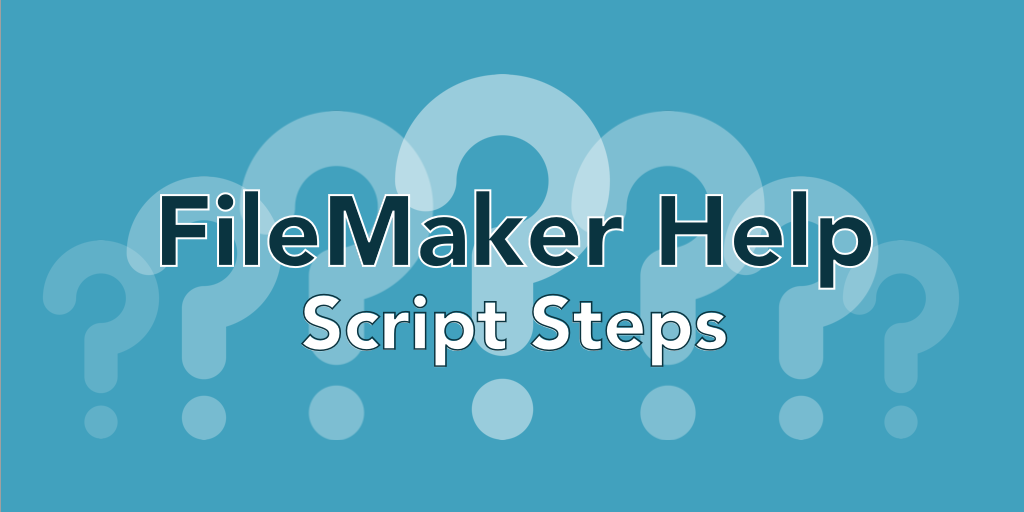FileMaker is a complex platform. There’s FileMaker Pro Advanced, FileMaker Go, FileMaker WebDirect, FileMaker Server. We also have FileMaker Cloud, FileMaker Data API, Custom Web Publishing, and Runtimes solution. There’s a lot to the platform, and we, as developers need to know what works for each component. We should know as much as we can about FileMaker Script Steps and their compatibility to those parts of the platform we are targeting in our development. The best place to learn about script steps is in the FileMaker Script Steps Reference.
Very Helpful Help
As I’ve written in a few other posts (FileMaker Help and FileMaker Functions Reference), the FileMaker help system is vastly improved from years ago. There’s a lot of information inside each page. The folks at FileMaker, Inc. put a great deal of effort into the pages. It is very much worth our look and study.
The FileMaker Help Script Steps Reference Page format
Each script step is well document with the following sections:
- Name
- Options
- Compatibility
- Originated In
- Description
- Notes
- Examples
Options
This section describes all the possible options you have with a script step, which are found inline (for boolean options) or in the gear icon. The more options, the more information there is here to read and understand.

Compatibility
Each script step has one of three compatible choices for each part of the platform: Yes / No / Partial. Here’s what the Sort Records Script step’s compatibility looks like.

Originated In
While seemingly benign, this section tells you if you can use a script step. As you read about techniques or get answers from the community, you should review it to see if you can use the step. Of course, if you’re on the latest version, there’s no problem. This section then becomes a cool FileMaker-trivia source.
Description
Here is where the script step’s purpose is described. It’s pretty straight forward, but one that should hold our attention. For example, the Sort Records script step description has this line.
If you sort a repeating field, FileMaker Pro Advanced sorts on only the first entry in that field.
I didn’t know that. But I never use repeating fields for data-storage, so I guess it’s okay not knowing this 🙂
Notes
This section is worth its character count in gold. Here we can read some of the nitty-gritty details about the script step and learn why the script step has Partial compatibility in a part of the platform. For example, the Sort Records script step has partial support in FileMaker Server (scheduled scripts or Perform Script on Server). Here’s what it says
Server-side scripts, the FileMaker Data API, and Custom Web Publishing run this script step as if the With dialog option is set to Off, so you must use the Specify sort order option to save the sort order in this script step.
Again. Interesting and vital to our development. If this script steps doesn’t have a sort order specified in the step, the server-run script may end up with the wrong order of records.
I take my time to read and understand the Notes section. There’s valuable information here that might apply to us. I appreciate FileMaker, Inc. taking the time to write out these minute details.
Examples
The script step in question is shown in an example. There’s a brief narrative of what the script should do, and then the steps are listed. It’s a good source if you’re learning about the step.
It’s Worth the Look
The FileMaker Script Steps reference has much value to FileMaker developers. Many script steps have individual quirks about them, which are documented here. FileMaker developers new to the platform would do well to read the help while writing scripts or reading an answer on the community. Experienced developers could refine their understanding of the script steps. And, while unconfirmed, I’ve heard that many questions on the FileMaker certification test come from the “Notes” section of the steps.
When you need a break, when you’re stuck mid-script-write, or just want to waste time, read through a script step’s help. You’ll probably learn something new.

